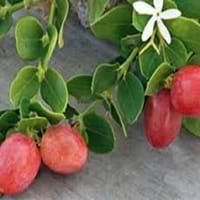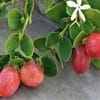Life Span
Perennial
Perennial
Type
Fruit
Broadleaf Evergreen
Origin
Central Asia, Southern Asia, Western Ghats, India
Australia
Types
congesta, paucinervia
Bigleaf hydrangea, Hortensia, Smooth hydrangea, Oakleaf hydrangea, Annabelle
Habitat
Fertile bottom land, moist forests, Temperate Regions, Tropical Forests
Forest edges, Hillside, Woods
USDA Hardiness Zone
Not Available
9-15
AHS Heat Zone
8-3
Not Available
Sunset Zone
Not Available
21,22
Habit
Upright/Erect
Spreading
Flower Color
Pale White, White
Red
Flower Color Modifier
Bicolor
Bicolor
Fruit Color
Purple, Black
Sandy Brown
Leaf Color in Spring
Green
Green, Sea Green, Rose, Bronze
Leaf Color in Summer
Green
Green, Light Green
Leaf Color in Fall
Green
Green, Light Green, Gray Green
Leaf Color in Winter
Light Green
Green, Gray Green
Plant Season
Spring, Summer, Fall
Spring, Summer, Fall, Winter
Sunlight
Full Sun, Partial Sun, Partial shade
Full Sun, Partial Sun
Growth Rate
Medium
Medium
Type of Soil
Loam
Loam, Sand
The pH of Soil
Acidic, Neutral, Alkaline
Acidic, Neutral
Soil Drainage
Well drained
Well drained
Bloom Time
Spring
Indeterminate
Tolerances
Drought
Wet Site, Pollution, Drought, Salt, Soil Compaction
Where to Plant?
Ground
Container, Ground
How to Plant?
Seedlings, Stem Cutting
Seedlings, Stem Planting
Plant Maintenance
Medium
Medium
Watering Requirements
Keep the ground moist but not water-logged
Not Available
In Summer
Lots of watering
Drought Tolerant
In Spring
Moderate
Moderate
In Winter
Average Water
Average Water
Soil pH
Acidic, Neutral, Alkaline
Acidic, Neutral
Soil Type
Loam
Loam, Sand
Soil Drainage Capacity
Well drained
Well drained
Sun Exposure
Full Sun, Partial Sun, Partial shade
Full Sun, Partial Sun
Pruning
Prune if you want to improve plant shape, Remove dead leaves
Remove damaged leaves, Remove dead branches, Remove dead leaves
Fertilizers
Compost, fertilize in growing season
All-Purpose Liquid Fertilizer
Pests and Diseases
Aphids, Earwigs, Insects, Mildew, Red blotch, Rust, sawflies
Red blotch
Plant Tolerance
Dry soil, Heat And Humidity
Wet Site, Pollution, Drought, Salt, Soil Compaction
Flowers
Insignificant
Showy
Flower Petal Number
Single
Single
Foliage Texture
Medium
Fine
Foliage Sheen
Matte
Matte
Attracts
Birds, Butterflies, Fruit Bats
Bees, Flies
Allergy
Eczema, Mouth itching, Throat itching
Chest tightness, Diarrhea, Dizziness, Nausea, Vomiting
Aesthetic Uses
Not Available
Not Available
Beauty Benefits
good for lips, Remove blemishes
Not Available
Edible Uses
Yes
Not Available
Environmental Uses
Air purification, Food for animals, Food for birds, soil stabilisation
Air purification
Medicinal Uses
Anemia, Diuretic, Potassium, Rich in Iron, Vitamin C
Fever, Kidney problems, Urinary tract problems
Part of Plant Used
Fruits, Leaves
Flowers, Root
Other Uses
Added to salads, Cosmetics, Culinary use, Used as a nutritious food item, Used As Food, Used for its medicinal properties
Not Available
Used As Indoor Plant
No
Not Available
Used As Outdoor Plant
Yes
Yes
Garden Design
Edible, Fruit / Fruit Tree, Hedges
Container, Feature Plant, Hedges, Mixed Border, Screening, Wind Break, Topiary, Bonsai, Espalier, Tropical
Botanical Name
Carissa carandas
CALLISTEMON citrinus
Common Name
Black Currant
Crimson Bottlebrush
In Hindi
करोंदा, कालि मैना
Hydrangea
In German
Carandas
Hortensie
In French
karondas
Hortensia
In Spanish
karondas
Hortensia
In Greek
karondas
υδραγεία
In Portuguese
karondas
Hortênsia
In Polish
karondas
Hortensja
In Latin
karondas
Hibiscus
Phylum
Magnoliophyta
Not Available
Class
Magnoliopsida
Not Available
Order
Gentianales
Not Available
Family
Apocynaceae
Myrtaceae
Genus
Carissa
Not Available
Clade
Angiosperms, Asterids, Eudicots
Not Available
Tribe
Not Available
Not Available
Subfamily
Not Available
Not Available
Number of Species
Not Available
Not Available
Season and Care of Karonda and Crimson Bottlebrush
Season and care of Karonda and Crimson Bottlebrush is important to know. While considering everything about Karonda and Crimson Bottlebrush Care, growing season is an essential factor. Karonda season is Spring, Summer and Fall and Crimson Bottlebrush season is Spring, Summer and Fall. The type of soil for Karonda is Loam and for Crimson Bottlebrush is Loam, Sand while the PH of soil for Karonda is Acidic, Neutral, Alkaline and for Crimson Bottlebrush is Acidic, Neutral.
Karonda and Crimson Bottlebrush Physical Information
Karonda and Crimson Bottlebrush physical information is very important for comparison. Karonda height is 120.00 cm and width 120.00 cm whereas Crimson Bottlebrush height is 530.00 cm and width 470.00 cm. The color specification of Karonda and Crimson Bottlebrush are as follows:
Karonda flower color: Pale White and White
Karonda leaf color: Green
Crimson Bottlebrush flower color: Red
- Crimson Bottlebrush leaf color: Green, Sea Green, Rose and Bronze
Care of Karonda and Crimson Bottlebrush
Care of Karonda and Crimson Bottlebrush include pruning, fertilizers, watering etc. Karonda pruning is done Prune if you want to improve plant shape and Remove dead leaves and Crimson Bottlebrush pruning is done Remove damaged leaves, Remove dead branches and Remove dead leaves. In summer Karonda needs Lots of watering and in winter, it needs Average Water. Whereas, in summer Crimson Bottlebrush needs Drought Tolerant and in winter, it needs Average Water.





